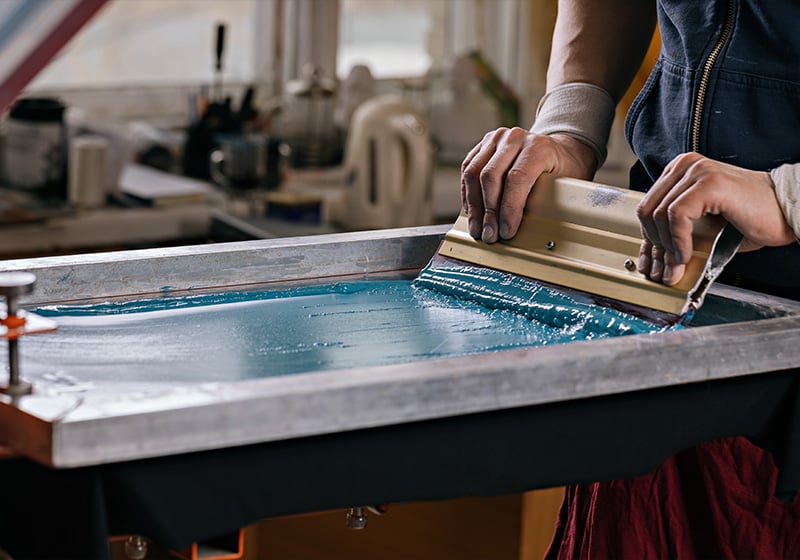Table of Contents
What screen printing is
Screen printing is a printing technique that uses a stencil (or screen) to transfer ink to a substrate. The screen, usually made of silk or polyester, is prepared in such a way that some areas allow the ink to pass through, while others don’t. By pushing the ink through the screen using a blade or a squeegee, the desired image is transferred to the material beneath.

How screen printing worked in the past
Originally, screen printing was a manual technique used mostly used in Asia. The roots of this method go back thousands of years, when it was used to print on fabrics in China. The ancient Chinese used silk threads stretch over a frame as a screen and created stencils from leaves or boxes to block the ink.
With the advent of the industrial revolution, screen printing became more mechanised, but the process remained essentially manual until the turn of the 20th century.
How modern screen printing works
Today, modern screen printing employs advanced materials and techniques to obtain precise and reproduceable results. Instead of hand-made stencils, modern screen printing uses light-sensitive emulsions that are applied to the screen. When parts of these emulsions are exposed to light, they harden to prevent ink from passing through, while unexposed areas remain soluble and can be washed away, thereby creating the desired image on the screen.
The ink used in modern screen printing is highly pigmented and suitable for a variety of substrates, from fabrics to plastics and much more.

How automated screen printing works
As technology has advanced, screen printing has made a further leap forwards with the advent of automated machines. These systems are able to print large volumes of products quickly and with incredible precision.

A typical modern screen-printing machine uses a series of mechanical arms to move the screen and substrate through a number of different stations. It can handle most phases of the printing process, from preparing the screen to applying the ink and putting the finishing touches to the final product.
What screen printing is used for
Screen printing is extremely versatile, which is why it’s used to print a huge range of products. Common uses include:
Fabrics: T-shirts, sportswear, flags, bed clothes and much more.
Rigid materials: stickers, advertising posters, signs, control panels and electronic components.
Promotional items: pens, mouse pads, mugs and similar.
Packaging: bags, boxes and labels.

The advantages of screen printing
Screen printing offers a series of benefits:
Versatility: suitable for all sorts for materials, from fabrics to plastics.
Durability: screen-printed products are wear, heat and moisture resistant.
Colour quality: screen printing produces bright and saturated colours that don’t fade easily.
Affordability: for large print runs, screen printing can be cheaper than other printing techniques.
Customisation: by using special inks, such as fluorescent or metallic varieties, screen printing can create unique and distinctive products.

All in all, screen printing is a powerful and versatile technique that has seen much evolution and innovation over the centuries. Whether it’s customised T-shirts or industrial components, screen printing remains a popular choice for many graphic design professionals.

